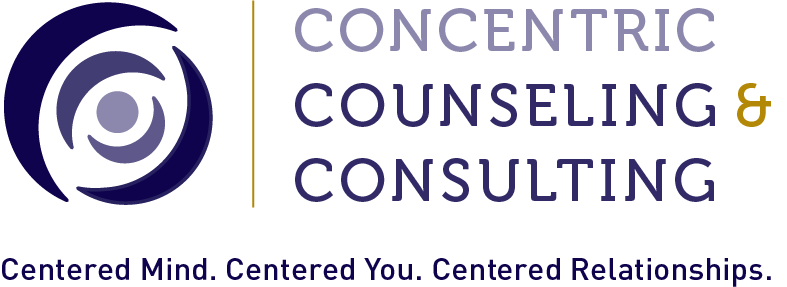Simple Meditation Steps For All Ages
/By Concentric Counselor Michelle Taufmann, LCSW
These are the instructions for the basic meditation on the breath that I teach clients. Meditation on the breath is a simple, classic form of meditation that has been used for thousands of years to strengthen one’s focus and ability to sustain full awareness.
First, sit on the floor on a meditation pillow, or in a chair. Sit in a comfortable position with your back straight, but not rigid. If you are sitting in a chair it is best to sit forward with your back away from the back of the chair (rather than leaning back into the chair). You want
to assume a posture that facilitates being alert, yet relaxed. Next, close your eyes, or if you prefer, lower your to a gaze about a foot in front of your feet on the floor. The purpose of closed eyes (or lowered gaze) is to remove visual distractions from the field of perception. Now, take a moment to relax your head, neck, shoulders and arms by rotating them, tensing and releasing them, and/or shaking them out; these parts of the body tend to hold a lot of
tension.
You are now ready to begin the meditation on the breath. Start by noticing your breath as it comes into and out of your body. The experience of the breath coming into or out of the body is most noticeable in the following areas of the body: at the nostrils (the sensation of the breath going into and out of the nostrils), at the chest (the sensation of the chest rising and falling, and at the abdomen (the sensation of the abdomen rising and falling). Choose one of these areas on which to observe the breath. It usually works best to choose the area of the body where the sensation of breathing is the strongest for you. Now, simply attend to the breath. Think of it as being present to the experience of breathing. Your attention on the
breath should be light; you do not want to concentrate or think about the breath.
Once you have stabilized your attention on your breath, sit in this way for the designated amount of time. Ten minutes is the recommended amount of time for beginners. If you are like most people, you will fairly soon notice that your mind has wandered. When you notice
this, gently let go of the distraction, whether it is a thought, sound, or internal sensation, and bring your attention back to your breath. Continue in this way, returning your mind to your breath each time you become aware that it has wandered. Remember to do this with
patience and gentleness.
Try not to become frustrated or judge yourself if your attention wanders frequently. Frequent mind-wandering is normal and to be expected, especially for beginners. Becoming frustrated or judging yourself for not being able to sustain attention on the breath is simply further distraction from your meditation practice and should be dropped as quickly and gently as other distractions are dropped during your practice.
With practice, mediation of the breath will strengthen your focus and ability to sustain full awareness.









